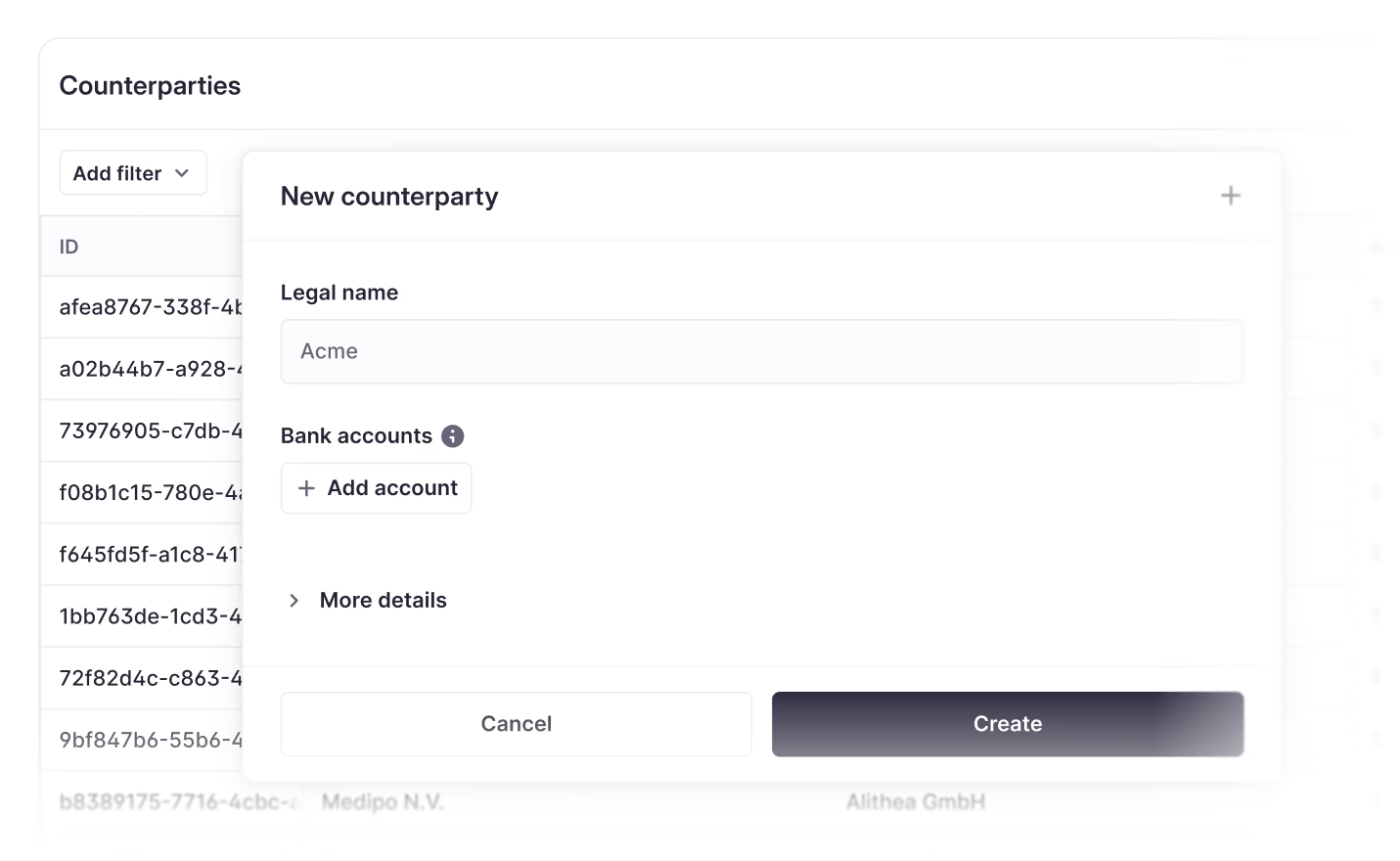What are accounts payable?
Accounts payable refer to the money a company owes to suppliers, vendors, or contractors for goods or services that have been received but not yet paid for.

Introduction to accounts payable (AP)
Accounts payable refer to the money a company owes to suppliers, vendors, or contractors for goods or services that have been received but not yet paid for. A payable is essentially a short-term ‘IOU’ from one business to another, which the counterparty enters in its own records under accounts receivable (AR).
An account payable (AP) payment refers to the actual payment of an unpaid ‘IOU’ or invoice, which usually have payment terms of 30, 60, or 90 days. Typically, the longer the payment term the better, as that improves working capital in the short term.
What is AP management?
Managing AP processes and payments is a critical element in controlling a company’s short-term cash flow. Unlike accounts receivable, which depend on when a customer or client decides to pay you, accounts payable are within the company's direct control, as it ultimately decides when to make payments.
If accounts payable increase over time, it means the company is buying more goods or services on credit, rather than paying cash upfront. This could improve working capital in the short term, but only if the company manages its payables efficiently and is certain to meet these obligations when they become due. This balancing act is part of managing a company’s working capital cycle, meaning the time it takes for a business to convert its current assets and liabilities (working capital) into cash.
AP automation software can be used to simplify the AP payment cycle, from scanning invoices and capturing transaction details to facilitating reconciliation. These systems typically do not handle the actual execution of a payment, which requires integrations with a company’s banking partners.
A typical AP process
- Creation of a purchase order (PO): The process starts when the buyer prepares and sends a purchase order to the seller outlining the requested goods or services, quantities, pricing, and agreed-upon payment terms. It acts as a formal offer to purchase.
- Confirmation and invoice preparation: The seller confirms their ability to fulfill the PO and issues an invoice that includes details such as the amount due, terms, and payment instructions. If the seller is providing a service, this might be issued retroactively once the service has been fulfilled.
- Delivery of goods or services: The seller delivers the product or service as specified in the PO. The buyer may require documentation such as shipping receipts before releasing the payment.
- Invoice approval and payment processing: If everything is in order, the buyer approves the invoice for payment. In larger companies, this can be a multi-step approval process across various departments, such as procurement and finance. Any issues may lead to returns or disputes.
- Payment execution: The buyer processes the payment using the chosen method. To do so, they might enter the payment in their corporate banking portal or use specialized software, such as an AP automation tool.
- Payment tracking and confirmation: After processing the payment, the buyer may monitor its status to ensure successful execution and avoid potential late fees or relationship damage. Once the seller receives the payment, they provide confirmation to the buyer. Any errors or disputes during the payment cycle may require the payment to be retried or returned.
- Reconciliation: Both the buyer and seller must reconcile the payment with their financial records. This involves verifying that the purchase order (PO) details, such as the amount and reference number, match those on the invoice and in the transaction shown on their respective bank statements. If these records do not align, a manual investigation will be needed.
- Reporting and analysis: Both the buyer and seller may include the transaction in their cash reporting and forecasting for analysis. These reports are valuable for cash positioning – understanding the company's current cash status – and for predicting short-term cash flow.
- Recordkeeping and compliance: Throughout the payment cycle, both businesses maintain detailed records of all documents, including POs, invoices, payment confirmations, and any correspondence, to meet legal, tax, and compliance requirements.
Main types of accounts payable
There are three main categories of accounts payable:
- Trade payables: payments owed for inventory purchases that are recorded at the time of purchase or when the inventory is received
- Expense payables: payments owed for operational expenses (such as utilities, rent, and professional fees) that are recorded upon receipt of the invoice
- Accrued expenses: expenses that have been incurred (and entered into the books) but not yet invoiced
Some common examples of AP payments are:
- Supplier invoices
- Legal fees
- Contractor payments
- Travel expenses
- Equipment and software purchases
How Atlar can help with accounts payable
Operationally, AP payments can be automated through an integration with a company’s ERP system.
For example, Atlar enables companies to process AP payments from inside their ERP, such as NetSuite or Dynamics 365, and send these for payment in bulk through Atlar to their banking partners. This lets companies automate AP processes at scale with full bank-ERP syncing and a high degree of internal control.
You can unsubscribe anytime.
Further reading
See Atlar in action.
Enter your work email to watch a live product demo.


